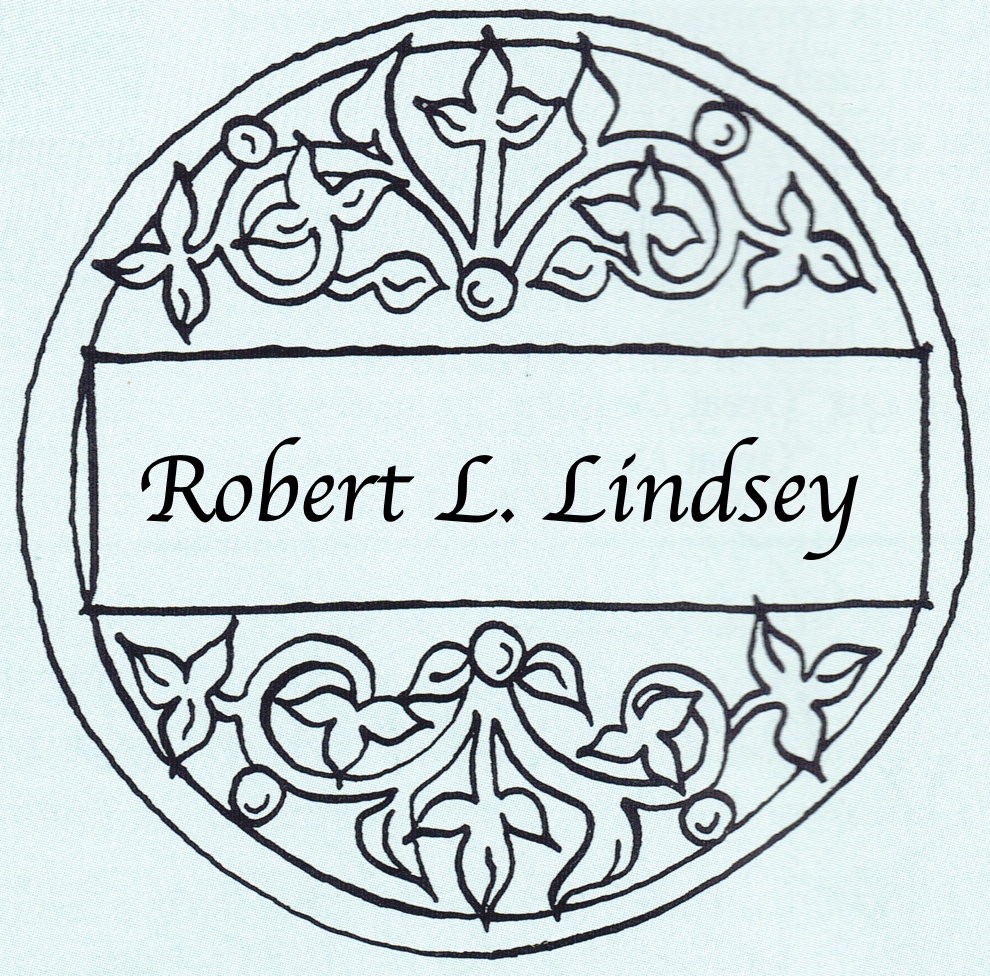 Dr. Lindsey wrote this article in preparation for the press conference that took place in October 1969 upon the publication of his A Hebrew Translation of the Gospel of Mark.[10] This press conference was held at the Baptist House, Narkis Street 4, in the Jerusalem suburb of Rehaviah. The book contains, in addition to the Greek and Hebrew texts of Mark, which Lindsey spent nearly ten years in perfecting, a Foreword by Professor David Flusser of the Department of Comparative Religions at the Hebrew University of Jerusalem and a 76-page English Introduction by Lindsey. Dr. Lindsey wrote this article in preparation for the press conference that took place in October 1969 upon the publication of his A Hebrew Translation of the Gospel of Mark.[10] This press conference was held at the Baptist House, Narkis Street 4, in the Jerusalem suburb of Rehaviah. The book contains, in addition to the Greek and Hebrew texts of Mark, which Lindsey spent nearly ten years in perfecting, a Foreword by Professor David Flusser of the Department of Comparative Religions at the Hebrew University of Jerusalem and a 76-page English Introduction by Lindsey. |
Mark’s Unpopularity
The Gospel of Mark was never popular in the Greek-speaking Hellenistic church. Papias, the mid-second-century bishop of Hierapolis in Phrygia, was the first church father to mention the Gospel and his statement was probably dictated by the general criticism voiced against Mark by the early Greek readers of the Gospel: “Mark,” Papias says, “did no wrong in writing down the things [he had only heard Peter say].”[11]
The order of the four Gospels in the earliest manuscripts often placed Mark at the end of the four, but in any case always secondary to Matthew (as in the modern order). It is now clear that ancient Greek manuscripts of the New Testament like Codex Bezae show a deliberate scribal attempt to revise the text of Mark through harmonization with Matthew and Luke. Mark’s Gospel is not quoted at all by such early writers as Clement of Rome or Ignatius of Antioch, and it was only in the fifth century that Mark even rated a commentator: Victor of Antioch.
Saint Augustine wrote rather contemptuously of Mark as “a camp-follower and abridger” of Matthew.[12] Even in modern times the sections for Sundays and Saints’ Days in the Church of England Prayer Book show only three readings from Mark out of a total of seventy from the Gospels.
Various reasons have been given for Mark’s unpopularity. One is that he was not an apostle like Matthew and John to whom Gospels are credited. Another is that his book does not, like theirs, contain many of Jesus’ longer discourses. Whatever the reasons, Mark’s Gospel was never popular in ancient times.
Premium Members and Friends of JP must be signed in to view this content.
If you are not a Premium Member or Friend, please consider registering. Prices start at $5/month if paid annually, with other options for monthly and quarterly and more: Sign Up For Premium
- [1] English translation: Rudolf Bultmann, The History of the Synoptic Tradition (trans. John Marsh; Oxford: Basil Blackwell, 1963). ↩
- [2] David Flusser remarked at the press conference that Lindsey's Hebrew translation of Mark is of much significance in the long history of New Testament Hebrew translations, but that the importance of Lindsey's work lies mainly in Lindsey's theory of the composition of Mark and Mark's relationship to that of Matthew and Luke. See David Flusser's references to Lindsey's research in David Flusser, The Sage from Galilee: Rediscovering Jesus' Genius (Grand Rapids, MI: Eerdmans, 2007), 3-4, 122. Flusser states: "My approach to the ["Synoptic Problem" is]...chiefly based on the research of the late R. L. Lindsey...The present biography [The Sage from Galilee] intends to apply the methods of literary criticism and Lindsey's solution to unlock these ancient sources [the Gospels of Matthew, Mark and Luke]" (pp. 3-4). See also the references to Lindsey in Flusser's entry, "Jesus," in The Encyclopaedia Judaica (Jerusalem: Keter; New York: Macmillan, 1972), 10:10. ↩
- [3] Flusser explained at the press conference that the very way in which Lindsey came to his conclusions has a certain authenticity which is to be admired: "Lindsey started out only to get a modern Hebrew text of the Gospel of Mark that would update the excellent but antiquated translation of Franz Delitzsch. He had been taught, as we all were, that from the last quarter of the nineteenth century it had been proved that Mark had served as one of the sources of Matthew and Luke. He had no reason to disbelieve this theory. It was while he was making his first draft that he ran into the difficulties that drove him to his long and painstaking research and which, in my view, ended in the most important and decisive correction of the usual view of Markan priority ever made." ↩
- [4] Albert Huck, Synopsis of the First Three Gospels (9th ed. rev. by Hans Lietzmann; New York: American Bible, 1936). ↩
- [5] William F. Moulton and Alfred S. Geden, eds., A Concordance to the Greek Testament According to the Texts of Westcott and Hort, Tischendorf, and the English Revisers (3rd ed.; Edinburgh: T. & T. Clark, 1950). ↩
- [6] The Augustinian theory insists that Mark used Matthew only to be followed by Luke who used both Mark and Matthew. A modern defense of this position may be found in B. C. Butler's The Originality of St. Matthew: A Critique of the Two-Document Hypothesis (Cambridge, 1951). On the other hand, the Griesbach theory concludes that Luke used Matthew only to be followed by Mark who used both Luke and Matthew. The strongest defense of this theory is provided by W. R. Farmer's book, The Synoptic Problem: A Critical Analysis (2nd ed.; Dillsboro, NC: Western North Carolina Press, 1976). ↩
- [7] I met Professor Flusser for the first time in the summer of 1961. ↩
- [8] The end of Mark's Gospel was lost at an early stage, but some scholars believe it may have been preserved in the last chapter of Matthew's Gospel. ↩
- [9] This article appeared on page 11 of the Friday, October 24, 1969 Jerusalem Post Magazine [the weekend supplement]. ↩
- [10] Robert L. Lindsey, A Hebrew Translation of the Gospel of Mark. Jerusalem: Dugith Publishers, 1969 (1st ed.); 1973 (2d ed.). xxvi + 162 pp. (Preface to the 2nd ed., pp. v-xxvi. Foreword by David Flusser, pp. 1-8. Introduction, pp. 9-84. Greek text and Hebrew trans., pp. 85-159.) ↩
- [11] Eusebius, Eccl. Hist. 3.39.15. ↩
- [12] De Consensu Evangelistarum 1.2.4. ↩



![Robert L. Lindsey [1917-1995]](https://www.jerusalemperspective.com/wp-content/uploads/userphoto/28.jpg)
